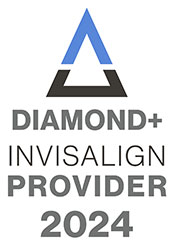After Placement of Temporary Anchorage Devices
Temporary anchorage devices are unique in their application as not every patient needs them. These tiny little screws have to be surgically implanted in the jaw, and no one does this better than the Orthodontist at Discover Orthodontics. If you have a tricky orthodontic correction that no one else is willing to do, call Discover Orthodontics for an appointment.
How Temporary Anchorage Devices Are Placed
Depending on what the orthodontist is attempting to do, these tiny little screws can be placed at different spots in the mouth. At the center front of the bottom jaw, on both sides of the upper or lower jaw, and near the rear of the upper or lower jaw are the most common placements. If you need to have temporary anchorage devices placed, this is where the tiny screws are surgically inserted.
After the Screws Are In
Once the tiny screws are in, your Acton orthodontist runs a wire to connect brackets on your teeth or uses orthodontic rubber bands to secure the tiny screws to brackets. As your bite alignment begins to change, the orthodontist will alter how the anchorage screws are connected to your teeth. It may take several months to correct and treat the problem your orthodontist is trying to fix.
Pain Is Common
These tiny screws are in bone or in between bones. They can be painful, but your orthodontist can provide you with some means of relief. They can also feel quite awkward when your tongue, lips, and/or cheeks rub against them. A little orthodontic wax over the heads of the little screws can help with the awkward sensation.
Brush Them to Keep Them Clean
It's important to keep the temporary anchorage screws and connecting wires or bands clean. Infection in the human mouth can happen, especially after oral surgery. Brush and clean these devices and tiny screws carefully according to your Acton orthodontist's instructions to avoid infection.
Once the tiny screws have done their job, your orthodontist will remove them. It will take time to heal. Again, keep these areas clean as they seal over and mend. If any infection starts, you will receive an antibiotic to counteract the infection.
Contact Discover Orthodontics If You Have a Complicated Orthodontic Plan
If you have been told that your orthodontic plan is complicated and you will need TADs inserted, contact Discover Orthodontics for a consultation appointment.

